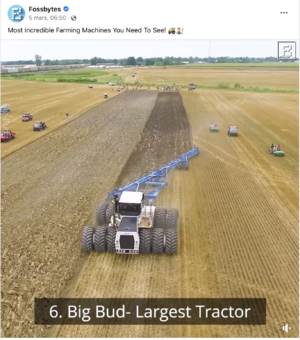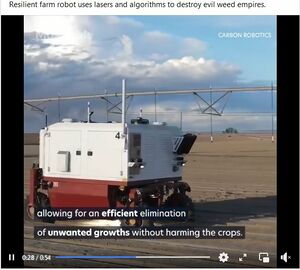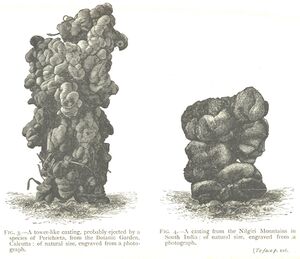|
|
| (38 intermediate revisions by the same user not shown) |
| Line 1: |
Line 1: |
| [[File:Oups.JPG|Oups]] [https://www.instagram.com/adelefassade/ instagram] // [https://vimeo.com/user28224179 vimeo] | | [[File:Oups.JPG|Oups]][https://vimeo.com/user28224179 vimeo] // [https://pzwiki.wdka.nl/mediadesign/Adele-project_proposal Project proposal re-assessment] // [https://pzwiki.wdka.nl/mediadesign/Adele-project_proposal Project proposal] // [https://pzwiki.wdka.nl/mediadesign/Adele-thesis_outline Thesis outline] // [https://pzwiki.wdka.nl/mediadesign/User:Ad%C3%A8le/YEAR-ONE Random goods gathered and digested last year] <br><br> |
| | |
| <big>'''Main occupation : ''How to become a mushroom ??'''''</big><br>
| |
| | |
| ''Questions :''
| |
| ===== What is a mushroom practice ? =====
| |
| | |
| notes from '''"The Mushroom at the end of the world - on the possibility of life in capitalist ruins”'' put together by Anna Lowenhaupt Tsing, that could be a set of tools to have a mushroomy practice :
| |
| *''Fungis are world builders''.<br>
| |
| *Hyphae : underground roots of fungis. Underground network of connections. Underground neurons.<br>
| |
| *Fungal eating is a generous practice because of ther extra-cellular digestion : it makes worlds for others.<br>
| |
| *Ectomycorrhizal fungi have inter species relationship. A mycorrhizal fungus will die without it's plant collaborator.<br>
| |
| *Humans and non-humans all cultivate each other unintentionnally. They make each others world-making projects possible.<br>
| |
| *Sites of more than Human dramas. Landscape patches emerge from more than human patches. Precarity is enacted in more-than-human sociality.<br>
| |
| *Symbiosis is the rule. Interspecies encounters are always events. Events are non-scalable, scalability rely on the repression on change and encounters.<br>
| |
| *"To appreciate polyphony, one must listen both to the separate melody lines and their coming together in unexpected moments of harmony or dissonance"<br>
| |
| *Disturbance : change in environmental condition that causes a prononced change in an ecosystem. For ecologist, the term does not reffer us to a harmonious state before disturbance. One disturbance follows another. They are ordinary. There is no balanced state possible. What counts as a disturbance in a matter of scale cand time comes always from the specific point of view of a being. It varies within species.
| |
| *Precarious living is always an adventure.
| |
| <br> | | <br> |
| ''10-02-21''<br>
| |
| Sandrine posted this video on facebook a few weeks ago, saying that she had just realised that Bernard Stiegler died during the summer.<br>
| |
| https://www.dailymotion.com/video/xa8b5b?fbclid=IwAR2dq5p2IYQw85PVkb_QQ6F1vD-4_A9jWMqJwxbDQOSvfGiOtLXP91FQeLQ <br>
| |
| It is called Aesthetic and the political. <br>
| |
| I listened to it and it made me feel better about the word "aesthetic" which I have a conflicted relationship with. I tend to avoid it, when I feel it's oppressive potential induced by propaganda and marketing. It can be quite violent as well, used as means of oppression and exclution against small communities and cultural minorities. I'm going to write a translation of what resonated with me in his saying. And what I find can be linked to a mushroomy vibe.<br>
| |
| This is a rought appropriation/translation :<br>
| |
| "I'm going to use the word aesthetic in it's broadest meaning. Aesthesis = sensation, sense of touch, the sensible. To sense and on sensibility in general.<br>
| |
| The artist's work should originally engage the sensibility of the other. Politics is essencially the relations between beings, a sensing together, a form of sympathy. Dealing with living together and support each other's singularities. The desire of singularities underlines a collective aesthetical belonging. A policical community is a sensitive collectiveness. To love each other is to love together something else thant oneself, through a transformation, an appropriation of a sensible reality. <br>
| |
| *The aestetical experience : process of sympathy building. A creativity that transforms the world to shape new collective sensibilities. '''A world building experience.''' <br>
| |
| *The body - artificial organs, objects and technologies - social organisation. -- Three entities, three contextual spaces to build and connect sensibility.<br>
| |
| Then, there is a war of aesthetics against marketing propaganda... against the alienation through uniformisation and simplification of sensibility.<br>
| |
| It induces a consumption behavior which leads to the loss of what Stiegler calls "primordial narcicissm". Individuals are deprived of theirs aestetical attachement to singularities. I am singular thanks to the objects and technologies (as languages) I have relationship with. The relations between industrial, uniform and scalable objects is particular or individual. It cancel the singularity, my past tend to become the same as my neighbors'. Then we can establish targets for the markets and perpetuate the particular. Within mass diffused, consensual and mass produced images and sounds my past loses its singularity. I am lost. The "I" is lost. The "we" is lost as well. Only a disconnected "us" remains... <br>
| |
| We can only love ourself from the intimate awareness of our own singulatity. Art is the experience, the mold and the support of this sensibility as an invitation to participate in a collective time. <br>
| |
| We fall back to this well known mantra of narcissism in psychoanalisis : if I don't love myself, I can't love others.<br>
| |
| And if I can't love others, ther is no politics. <br>
| |
|
| |
|
| ***In his saying, he talks especially about the insfluences of objects versus products. How they translate the sensible world for us humans. He doesn't talk about how the sensible world itself, confronted to the body, confronted directly to our senses, together, how our performative actions and relations, events or encounters create easthetics. It is interessting for me to realise how to build a world, all sort of translating objects and technologies are needed.<br>
| |
| ****In my practice, my tools are industrial and technological products, such as a computer, softwares, a pencil, a piece of paper, a plotter, a camera, ink,... How do I transform these products into objects, into friends, into transformative experiences ? <br>
| |
|
| |
|
| <!-- button2 -->
| |
| <div style='
| |
| width:700px;
| |
| height:1000px;
| |
|
| |
| float: right;
| |
| background-color: white;
| |
| border: 1px solid;
| |
| border-color: green;
| |
| padding: 15px;
| |
| margin: 0px;
| |
|
| |
|
| font-family: Menlo, Consolas, Monaco, "Lucida Console", monospace;
| | == nutritious goods gathered this year: == |
| color: green;
| |
| font-size:12px;
| |
| margin: 10px 0px 0px 0px;
| |
| >
| |
|
| |
|
| <!-- button2_A -->
| | <br> |
| [[:Anecdote|<span style="color: green; font-family: Menlo; font-size: 12px;"><b><i>Anecote</i></b></span>]]<br>
| |
| <div>
| |
| | |
| [[research|<span style="color: green; font-family: Menlo; font-size: 12px; width = 450px"></span>]]<br>
| |
| | |
| Today I went outside to walk in the snow and in the sun. I put on this playlist by Danielle on ''NTS'' because the tags were TECHNO BREAKS and LEFTFIELD HOUSE. I wanted a 120 to 150 bpm walk pace. I love the "leftfield" appellation in front of genres of music, it's house but not the right kind of house you know, more the left handed one, the one you are less used to, the one that is not quite qualifiable, the neighbor with a little bit more of complex association of wild weeds in its grass. Anyway, I was walking back, after having bought 500 grams of coconut flakes and reclaimed a beautiful black-rotten banana bunch, and her voice annouced a trak called ''"Native Mushrooms"''. My heart skipped a beat. As soon as I got home, I looked it up on youtube and I found this : <br>
| |
| {{youtube|WzA3BK9gS7o}}<br>
| |
| With this beautiful description <br>
| |
| X’trapolis is under threat...
| |
| | |
| Word is spreading fast that the powerful and long-feared Agamid lizard known by many as Reptilius has been sighted building a dangerous army on the outskirts of Squamata, exhausting the forests natural resources and leaving previously thriving, culturally significant and beautiful areas decrepit and lifeless in a greedy, capitalistic move to gain control.
| |
| | |
| Completely unaware of this, Reptant returns home to X’trapolis after spending 5 years conducting extensive research on Earth’s unique analogue technology.
| |
| | |
| With his esteemed Lizard Tech Militia stuck back on Earth, Reptant finds himself alone and must seek help from the infamous Gecko Force if he wishes to succeed in protecting his home.
| |
| | |
| The Gecko Force are a lounge of superior prehistoric native Gecko’s rumoured to have been some of the only survivors from the brutal Agamid colonisation of X’trapolis which occurred many generations ago.
| |
| | |
| With their power and extensive knowledge of X’trapolis, the planet and all of its delicate and precious lifeforms just might stand a chance...
| |
| credits
| |
| releases January 10, 2021
| |
| | |
| Return To Planet X’trapolis was written, recorded and mixed by Reppi T. Lizrd AKA Reptant at Squamata Studios, X’trapolis 2019-2020.
| |
| | |
| @reptant_the_lizard
| |
| Mastered by Alden Tyrell (@aldentyrell)
| |
| Cut by Marco Pellegrino at Analog Cut. (@marco-pellegrino)
| |
| Pressed at Record Industry.
| |
| Distributed by One Eye Witness.
| |
| | |
| LKR Records, 2020, Naarm (Melbourne), Australia.
| |
| | |
| “Dedicated to all the Lacertilia in the galaxy, May your forests remain untouched and liberated”
| |
| | |
| https://lkrrecords.bandcamp.com/album...
| |
| | |
| | |
| | |
| | |
| </div>
| |
|
| |
|
| </div>
| |
| <br>
| |
| <br>
| |
| <br>
| |
| <br>
| |
| <br>
| |
| <br>
| |
| <br>
| |
| <br>
| |
| <br>
| |
| <br>
| |
| <br>
| |
| <br>
| |
| <br>
| |
| <br>
| |
| <br>
| |
| <br>
| |
| <br>
| |
| <br>
| |
| <br>
| |
| <br>
| |
| <br>
| |
| <br>
| |
| <br>
| |
| <br>
| |
| <br>
| |
| <br>
| |
| <br>
| |
| <br>
| |
|
| |
|
| | ===== The earthy worms: ===== |
| <br> | | <br> |
| <br>
| | [[File:AUSTRALIAN EARTHWORM-03.jpg|200px|australian earthworm]] [[File:HENRYDARGER.jpg|480px|HENRYDARGER]] [[File:PICK-OMINO.jpg|200px|pick-omino]] [[File:PERMAFROSTWORMS.jpg|200px|Permafrost-worms]] [[File:WORMS MORPHOLOGY.jpg|175px]]<br> |
| <br>
| | <div style="font-size:0.7vw"> |
| <br>
| | images from left to right: Australian earthworm - Henry Darger, At Jennie Richie are rescued by Evans, "They attempt to get away by rolling themselves in floor rugs" - Pic-omino dices - cold worms (not really possible, don't live in the really cold areas) - Plate XVI, di Francesco Redi, 1684, Florence |
| <br>
| |
| <br>
| |
| <br>
| |
| <br>
| |
| <br>
| |
| <br>
| |
| <br>
| |
| <br>
| |
| <br>
| |
| <br>
| |
| <br>
| |
| <br>
| |
| <br>
| |
| <br>
| |
| <br>
| |
| | |
| <!-- button2 -->
| |
| <div style='
| |
| width:700px;
| |
| height:1000px;
| |
|
| |
| float: left;
| |
| background-color: white;
| |
| border: 1px solid;
| |
| border-color: green;
| |
| padding: 15px;
| |
| margin: 0px;
| |
| | |
| font-family: Menlo, Consolas, Monaco, "Lucida Console", monospace;
| |
| color: green;
| |
| font-size:12px;
| |
| margin: 10px 0px 0px 0px;
| |
| >
| |
| | |
| <!-- button2_A -->
| |
| [[:Anecdote|<span style="color: green; font-family: Menlo; font-size: 12px;"><b><i>I've been wanting to become a camera as well</i></b></span>]]<br> | |
| <div> | |
| | |
| [[research|<span style="color: green; font-family: Menlo; font-size: 12px; width = 450px"></span>]]<br>
| |
| | |
| On VR experience, framing with my head and body movements.
| |
| | |
| </div> | | </div> |
|
| |
|
| </div>
| | --> some types of earthworms: https://www.trees.com/gardening-and-landscaping/types-of-earthworms |
| <br>
| |
| <br>
| |
| <br>
| |
| <br>
| |
| <br>
| |
| <br>
| |
| <br>
| |
| <br>
| |
| <br>
| |
| <br>
| |
| <br>
| |
| <br>
| |
| <br>
| |
| <br>
| |
| <br>
| |
| <br>
| |
| <br>
| |
| <br>
| |
| <br>
| |
| <br>
| |
| <br>
| |
| <br>
| |
| <br>
| |
| <br>
| |
| <br>
| |
| <br>
| |
| <br>
| |
| <br>
| |
|
| |
|
| <br> | | <br> |
| <br>
| |
| <br>
| |
| <br>
| |
| <br>
| |
| <br>
| |
| <br>
| |
| <br>
| |
| <br>
| |
| <br>
| |
| <br>
| |
| <br>
| |
| <br>
| |
| <br>
| |
| <br>
| |
| <br>
| |
| <br>
| |
| <br>
| |
| <br>
| |
|
| |
|
| |
|
| |
| ===== How is what I do mushroomy ? =====
| |
|
| |
| A process that starts in or provoques disturbances. <br>
| |
| I come from an occidental middle-class intellectual and art driven family, and I was broughed up in a capital. I have been surrounded by man made technologies my whole life. I connect with the industrial landscapes and technologies more naturally than with growing ecosystems of other species with whom we are sharing this earth. I often don't know what I want to do with the technologies surrounding me, but I'm aware of them, and our collaborations occurs as events. We create something together, we share an experience. That is what I would like to call my closest inter-species interactions. It being with a computer software, a camera, a pensil, a printer, or a cooking pan. <br>
| |
| These collaborations are driven by other beings and the desire to make a history. Sometimes to be noticed by them through to giving, to cherishing, to thanking or even to prove a point. Always learning. I try to create small events with our encounters and provoque disturbances to write in our stories.
| |
|
| |
| ===== Why does my process tries to adopt a fungal behaviour ? =====
| |
|
| |
| To do :
| |
| Write a love letter to a mushroom.
| |
|
| |
|
| |
|
| |
|
| |
| <big>'''ongoing occupation :'''</big><br>
| |
|
| |
| - Letter Exchanges with Angel Adhera, remembering our bike travels<br>
| |
|
| |
|
| |
|
| |
| <big>'''Videos compositions :'''</big> <br>
| |
|
| |
|
| |
| '''-"''Wind blowing love story''" with Ryan and Ama Shyioka'''<br>
| |
| {{vimeo|503220759}}<br>
| |
| A wind blowing love story,<br>
| |
| Ryan and Adèle never met in person. <br>
| |
| They missed eachother, the time of a short trip, caught by Tinder's geolocalisation. <br>
| |
| This is the love story they created.<br>
| |
| One image blending into another. <br>
| |
| Au gré du vent, une histoire d'amour entre Ryan et Adèle. <br>
| |
| Une histoire rythmée par une succession d'image se fondant l'une dans l'autre. <br>
| |
| Algorithme amoureux, crée par Adèle Grégoire et Xiaoyuan. <br>
| |
| Ama Shyioka composé la musique en m'inspirant de ce thème, et de la morphose. <br>
| |
| 🥀<br>
| |
| Ryan made a book, I made a romcom.<br>
| |
|
| |
| '''- "Waiting and be patient" '''a youtube video to pass the time inspired by the melody of Ama Shyioka<br>
| |
| {{youtube|m4YD_hXdVTk}}<br>
| |
| [[File:windowdrawing.JPG|200px]]
| |
| [[File:everythingtoharmyou_02.png|200px]]<br>
| |
| [[File:waitingandbepatient_dessin.jpg|400px]]<br>
| |
| Sitting, looking at the steam appearing on the hammered glass from the warm cup of tea placed on the window still.<br>
| |
| A path is moving, taking us through a journey in between the window and the outside world.<br>
| |
| Behind the glass is a memory, is a wish, is an unexpected body reaction.<br>
| |
|
| |
| '''- "A reminiscent family" '''<br>
| |
| One channel video + drawing of my bike. The sound is coming out of the drawing.<br>
| |
|
| |
| '''''This is not my project, but still, it is part of my practice.'''''<br>
| |
| - "Living together - Loop session" for/with Henotics and Rafael <br>
| |
| We spend five days spying on the collective of performers Henotics, recording their every moves with six cameras and three microphones. <br>
| |
| I registered the sound of one of their warm up they call "Loop session". I felt like a composer, letting myself be guided by their energy, approaching my mic from their body, catching the way they processed the air around them. <br>
| |
| Through the sound, they come together in a polyphonic intercourse.<br>
| |
|
| |
| - "Schmink" with Théo Sixou<br>
| |
|
| |
|
| |
| <big>'''Textes'''</big>📚
| |
|
| |
| '''''"The Lathe of Heaven"'' written by Ursula K. Leguin'''
| |
|
| |
| '''''"Lilith Brood"'' written by Octavia Butler'''
| |
|
| |
| Lilith wakes up in a strange room, a cell with cold and sleek gray walls. Her last memories were of the war, the loss of her son and of the man she loved.
| |
| With Lilith, Octavia Butler brings the reader into a post-apocalyptic state of the world as we could have known it. The humans destroyed the Earth as they destroyed themselves. A ship of extra terrestrial nomads known as the Oankali, was sent to the Earth with the purpose of trading knowledge. These creatures have a particular thirst for knowledge, they are capable of constant accumulation of memory across generations, each individual knows and remembers everything that was processed through their body from the many thin sensory tentacles that cover their skin. Through them, they can acquire the genetic properties of all things, and their analysis gives them the power of copying, recreating and modifying what they studied and understood from the matter. Everything surrounding them are living beings, even their ship. They live for and through trade to enhance and spread their species through merging themselves with others that could be of interest.
| |
| Humans revealed themselves to have an irresistible kind of cell construct which provoque deadly diseases such as cancer to humans but, well studied could bring the next generation to shapeshift into any form. The Oankali rescued the few livings that survived the man made catastrophe and started the process of healing the planet. For them, this is the perfect trade opportunity, a restored planet and enhanced individual in exchange for genetic evolution. The power relation generated by the work of Oankalis, and their strange appearance, lead suspicion into the mind of several survivors. The humans end up more difficult to convince than expected. This brings generations of conflict, miscommunication, distrust, until the mixing of genes and multicultural individuals come to defy the understanding of both peoples. <br>
| |
|
| |
| *Nikanj, about humans : "They keep what experience has taught them - usually - but lose the experience itself."
| |
| *"We made a town. We even had a couple of mills for power. That made building easier. We build like crazy. If you were really busy, you didn't have to think that maybe you were doing it all for nothing. Maybe all we were going to do was sit in our handsome houses and pray in our nice churche and watch everybody not getting old. Then in one week, two guys and one woman hung themselves. Four others just disappeared. It would hit us like that - like a disease that one person caught and spread. We never had one suicide or one murder or one dissappearence. Somebody else caught the disease. I guess I finally caught it."
| |
|
| |
|
| |
|
| |
| '''''"The secret life of trees"'' written by Peter Wohlleben'''
| |
|
| |
|
| |
| '''''“The Mushroom at the end of the world - on the possibility of life in capitalist ruins”'', put together by Anna Lowenhaupt Tsing.'''
| |
| Chapter one : arts of noticing
| |
|
| |
| In this chapter, Anna Lowenhaupt Tsing looks for the connection between economy and environment. She takes well-known historical facts about the rise of the industrial era, its progress and its thirst for growth. She then exposes individual stories overlooked that point out the contradictions in promises and ruins of industrialisation for the human workers left without jobs and destroyed land. In the middle of this conflict, where the capitalist structure exploits both humans and non-humans into resources for investment, and humans try to fight for their survival in the same system. She asks this central question: after promise and ruins, another promise and another ruins, what emerges in the damaged landscapes ?
| |
| Independent entities, migrant workers, get together from one destroyed forest to another to profit discretely from this desolation picking the Matsutake mushrooms which grows amongst the light and red pines. Capitalism tries to standardise, individualise, segregate, alienate beings. But when this system fails us, unable to rely on a stable structure, unpredictable encounters transform us. While we look at the Matsutake mushroom, where their caps appear from their rizomic roots communicating through the ground, and how it influences human behaviours in vulnerable post industrial landscapes, it can make us think about collaborative survival.
| |
|
| |
| This chapter begins with an image, a scan of Mr. Imoto’s Map of revitalizing.
| |
| An accumulation of brush strokes spreading china ink all over the page, in every direction possible building a mysterious chaos for people who are nor familiar with japanese writing. If you look long enough, the strokes transform into intricate lines representing, with a strong energy, all sorts of animals, plants, mushrooms, insects, flowers, leaves, birds, rabbits, falcons, beetles, fawns and deers, mosquitos and butterflies.
| |
|
| |
| ''"Swing Time"'' written by Zadie Smith
| |
|
| |
| ''"L'université de Rebiba"'' written by Goliarda Sapienza
| |
|
| |
| ''"Les certitudes du doute"'' written by Goliarda Sapienza
| |
|
| |
| '''''"An Appartement on Uranus"'' Written by Paul B. Preciado'''<br>
| |
|
| |
| '''''"A Thing Like You and Me"'' Written by Hito Steyerl''' => https://www.e-flux.com/journal/15/61298/a-thing-like-you-and-me/<br>
| |
|
| |
|
| |
|
| | ===== Current occupations: ===== |
| | -The writing of a script in four chapters (As my thesis/8000 words)<br> |
| | -For each chapter, a series of drawings (how many? I don't know, it will depend on as little and as much as I manage to do)<br> |
| | -For each drawings a soundtrack (audio composition)<br> |
| | [[File:Screen Shot 2022-03-09 at 21.22.39.png|300px|thumb]] |
| | [[File:RESILIENT-ROBOTFARMERS.jpg|300px|thumb|resilient]] |
| | [[File:TUURRICULES-DARWIN.jpg|300px|thumb|Worm poo, Darwin]] |
| | [[File:TURRICULE MONEY.jpg|300px|thumb|money for labour]] |
| | [[File:Rare-earth-water.png|300px|thumb|privatizing the Oceans for Rare earths]] |
| | [[File:Rare-eath-space.png|300px|thumb|privatizing space for Rare earths, Hors-serie]]<br> |
|
| |
|
| <big>'''Films'''</big>👀<br> | | In the script, I’ve decided to take worms as guides and a motivation for storytelling.<br> |
| | One of the few earthworm specialists in the world, Michel Bouché, stated that the reason nobody cares about earthworms is because they don’t cause any damage(2014)<br> |
| | As agriculture industrialize and digitize itself, through the development of complex mechanical and digital technologies and with the help of a strong commercial lobbying, <br> |
| | the main focus has been the visible part of the earth: the mass production. How to expand its scale? How to prevent invasive species from destroying the crops? and How to collect the goods efficiently on very large surfaces?<br> |
| | The development of these infrastructures have slowly been impoverishing the soils in the last fifty years due to chemicals and heavy weight trucks plowing the ground, as if the earth was a dead thing. Slaughtering earthworms and other insects and microorganisms making the growth of vegetation and crops possible.<br> |
| | Worms have a rather bad connotation as they’re often assimilated to rotting and decay when sanitation, cleanliness and dematerialisation grow often in parallel with the notion of health and comfort in the west. But I discovered that earth worms were very relevant beings that could help me in the process of sharing some of my concerns. Indeed, they throw all binary boundaries to the garbage by essence, they are hermaphrodite and homosexual all at once. An earthworm is cold blooded and comes out mostly at night to be less visible. They are full of proteins and Omega 3, and are the food of many animals such as birds, moles, humans and cats. They like the grass to be messy and the earth full of roots to have a large diversity of nutritious goods. They dig their holes leaving mucus on the walls and peeing inside of the earth playing a big part in the nitrogen cycle. Their tunnels allow the water to reach ground water tables, preventing floods. And they swallow small rocks to digest other’s waste into excrement precious to us all.<br> |
|
| |
|
| Julia in the storm => https://www.youtube.com/watch?v=8tsvJ1XaXvo<br>
| | The story is lead by worms in all sort of shapes and forms, some more evident than others, but each of them has a transforming and digesting power, each of them has been used or created by capitalist systems as a commodity, each of them plays a role in the birth, life or death of images, and each of them is quite overwhelmed by the situation they are put into.<br> |
|
| |
|
| Kajillionaire - Miranda July<br>
| | The four chapters focus our attention on a particular moment in time and in a given location: a Cloud, the garden of old ladies, a wind turbine power plant, and a bar.<br> |
| | Different kinds of worms meet there: a long string of zeros and ones meets a light bolt, earthworms meet an old lady and her drawing, then some of these earthworms meet a computer worm, and finally GPU’s gather around a drink after a long day of work. They share their life, their aspirations, the material conditions affecting them, and their state as they inhabit and digest specific kinds of earths.<br>Those Earths, I decided to call «Rare Earths», are their context, the socio-political and economical ecosystems that shape their possible realities.<br> |
| | The Rare Earths define the conditions in which they can meet by accident and start a polyphonic story together.<br> |
|
| |
|
| Uncut Gem -Frères Safdies<br>
| |
|
| |
|
| The pleasure of being Robbed<br>
| |
|
| |
|
| Bacurau - Filio Klebher Mendosa<br>
| | The drawings and sounds are based on the documentation I gather in my research process as the script takes form. <br> |
| | Once I feel comfortable enough with the script, I'll make it read to several people. Their interpretation of the characters, comments and impressions, will also be gathered as documentation and used for the drawings and the sounds.<br> |
|
| |
|
| Under the skin - Joathan Glazer<br>
| | ===== documentation process for each chapters: ===== |
|
| |
|
| American Honey - Andrea Arnolds<br>
| | 1. [https://pzwiki.wdka.nl/mediadesign/User:Ad%C3%A8le/NorthC:_A_Data_Hotel a conductive real estate]<br> |
|
| |
|
| Le pont du nord - Jacques Rivettes<br>
| | 2. [https://pzwiki.wdka.nl/mediadesign/User:Ad%C3%A8le/the_garden_of_an_old_lady the garden of an old lady]<br> |
|
| |
|
| Céline et Julie vont en bateau - Jacques Rivettes<br>
| | 3. [https://pzwiki.wdka.nl/mediadesign/User:Ad%C3%A8le/hacked_daughters_of_the_wind hacked daughters of the wind]<br> |
|
| |
|
| Wendy and Lucy - Kelly Reichardt<br>
| | 4. [https://pzwiki.wdka.nl/mediadesign/User:Ad%C3%A8le/afterwork_drink afterwork drink]<br><br> |
|
| |
|
| Night Moves - Kelly Reichardt<br>
| | '''''Overall resources that are being digested together:'''''<br> |
|
| |
|
| A Iade Da Pedra - Ana Vaz<br> | | Tsing, A. (2015). ''The Mushroom At The End Of The World : On The Possibility Of Life In Capitalist Ruins.'' Princeton: Princeton University Press. |
|
| |
|
| APIYEMIYEKI? - Ana Vaz<br>
| | Baptiste Monsaingeon (2020). ''Homo detritus : critique de la société du déchet.'' Paris: Editions Du Seuil. |
|
| |
|
| Bébé Colère - Caroline Poggi et Jonathan Vinel https://www.youtube.com/watch?v=Vk8Rd71FHfc -- interview : https://www.youtube.com/watch?v=qjjaUplsQzY <br>
| | Butler, O.E. (2007). ''Lilith’s brood.'' New York: Grand Central Publishing. |
|
| |
|
| Jessica Forever - Caroline Poggi et Jonathan Vinel<br>
| | Dean, T. and Millar, J. (2005). ''Lieu.'' Paris: Thames & Hudson. |
|
| |
|
| Tekkonkinkreet - Taiyō Matsumoto (manga) Michael Arias(anime)<br>
| | Haraway, D. (2016). ''Staying With The Trouble : Making Kin In The Chthulucene.'' Durham (N.C.) ; London: Duke University Press. |
| | Ingold, T. (2007). ''Lines : a brief history.'' London Routledge. |
|
| |
|
| Leona Vingativa - Lixo na Sua Cara! ==> https://www.youtube.com/watch?v=31e_UVkxI4A&feature=youtu.be <br>
| | Joëlle Zask (2019). ''Quand la forêt brûle : penser la nouvelle catastrophe écologique.'' Paris: Premier Parallèle. |
|
| |
|
| Euphoria - two specials episodes, "Rue" and "Jules" Really interesting monologues in both episodes, "Jules" was clearly written by Hunter Shafer.<br>
| | Klinger, J.M. (2018). ''Rare earth frontiers : from terrestrial subsoils to lunar landscapes.'' Cornell University Press. |
|
| |
|
| ♫♫♫<br>
| | Ploeger, D. (2017). ''Abject Digital Performance: Engaging the Politics of Electronic Waste.'' Leonardo, 50(2), pp.138–142. |
|
| |
|
| Tsegue Maryam Guebrou - Homeless Wonderer https://www.youtube.com/watch?v=_6V1uTFIPnk&list=LL&index=49<br>
| | Steyerl, H. (2010). ''A Thing Like You And Me.'' e-flux. [online] 1 Apr. Available at: https://www.e-flux.com/journal/15/61298/a-thing-like-you-and-me/ [Accessed 8 Mar. 2022]. |
|
| |
|
| Roza Terenzi - Modern Bliss https://www.youtube.com/watch?v=jD2sKuzmQjA&list=PLPO3TQ5lFDw_ujpXd8D0B9i8B1viMQSr3<br>
| | ''les lombriciens acteurs indispensables de la vie,'' (2014). [Radio show] France Culture. 9 Autumn Available at: https://www.franceculture.fr/emissions/continent-sciences/les-lombriciens-acteurs-indispensables-de-la-vie [Accessed 8 Nov. 2021]. |
|
| |
|
| Basehead - Playing with toys https://www.youtube.com/watch?v=poMw4oko7RI<br>
| | ''newscenario.net.'' (2021). Chernobyl Papers. [online] Available at: http://newscenario.net/chernobyl-papers/ [Accessed 8 Mar. 2022]. |
|
| |
|
| Sexy Planet - Bonnie Banane https://www.youtube.com/watch?v=ORId1udUn_0<br>
| | ''Tenkū no Shiro: Laputa.'' (1986). [Film] Japan: Studio Ghibli. |
|
| |
|
| AYA - Aya Nakamura https://www.youtube.com/watch?v=2HpVXylp01E&list=PLtzCLY77F77C6efRjODph5przCMfrvmSL<br>
| | https://pad.xpub.nl/p/RARE-EARTH |
|
| |
|
| '''Links'''<br>
| | some more goodies at the end: <br> |
| http://tristangac.com/recentworks/<br>
| | https://www.youtube.com/watch?v=_AErOonpj2s<br> |
| http://meriembennani.com/<br>
| | https://www.youtube.com/watch?v=U6hkZUiuF5A<br> |
| | https://collapsingmarket.bandcamp.com/album/work<br> |
| | https://www.youtube.com/watch?v=U9GaEeEAY9U<br> |
| | https://www.youtube.com/watch?v=u7Tn1nXEIfU<br> |
 vimeo // Project proposal re-assessment // Project proposal // Thesis outline // Random goods gathered and digested last year
vimeo // Project proposal re-assessment // Project proposal // Thesis outline // Random goods gathered and digested last year
nutritious goods gathered this year:
The earthy worms:

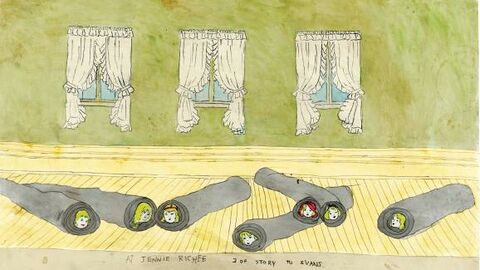
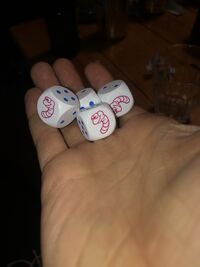
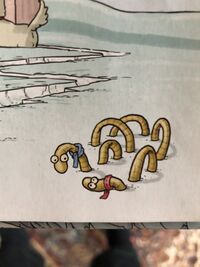
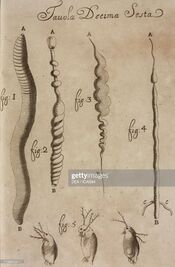
images from left to right: Australian earthworm - Henry Darger, At Jennie Richie are rescued by Evans, "They attempt to get away by rolling themselves in floor rugs" - Pic-omino dices - cold worms (not really possible, don't live in the really cold areas) - Plate XVI, di Francesco Redi, 1684, Florence
--> some types of earthworms: https://www.trees.com/gardening-and-landscaping/types-of-earthworms
Current occupations:
-The writing of a script in four chapters (As my thesis/8000 words)
-For each chapter, a series of drawings (how many? I don't know, it will depend on as little and as much as I manage to do)
-For each drawings a soundtrack (audio composition)
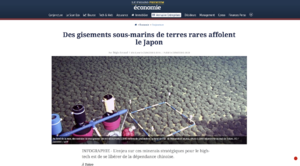
privatizing the Oceans for Rare earths
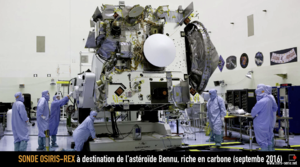
privatizing space for Rare earths, Hors-serie
In the script, I’ve decided to take worms as guides and a motivation for storytelling.
One of the few earthworm specialists in the world, Michel Bouché, stated that the reason nobody cares about earthworms is because they don’t cause any damage(2014)
As agriculture industrialize and digitize itself, through the development of complex mechanical and digital technologies and with the help of a strong commercial lobbying,
the main focus has been the visible part of the earth: the mass production. How to expand its scale? How to prevent invasive species from destroying the crops? and How to collect the goods efficiently on very large surfaces?
The development of these infrastructures have slowly been impoverishing the soils in the last fifty years due to chemicals and heavy weight trucks plowing the ground, as if the earth was a dead thing. Slaughtering earthworms and other insects and microorganisms making the growth of vegetation and crops possible.
Worms have a rather bad connotation as they’re often assimilated to rotting and decay when sanitation, cleanliness and dematerialisation grow often in parallel with the notion of health and comfort in the west. But I discovered that earth worms were very relevant beings that could help me in the process of sharing some of my concerns. Indeed, they throw all binary boundaries to the garbage by essence, they are hermaphrodite and homosexual all at once. An earthworm is cold blooded and comes out mostly at night to be less visible. They are full of proteins and Omega 3, and are the food of many animals such as birds, moles, humans and cats. They like the grass to be messy and the earth full of roots to have a large diversity of nutritious goods. They dig their holes leaving mucus on the walls and peeing inside of the earth playing a big part in the nitrogen cycle. Their tunnels allow the water to reach ground water tables, preventing floods. And they swallow small rocks to digest other’s waste into excrement precious to us all.
The story is lead by worms in all sort of shapes and forms, some more evident than others, but each of them has a transforming and digesting power, each of them has been used or created by capitalist systems as a commodity, each of them plays a role in the birth, life or death of images, and each of them is quite overwhelmed by the situation they are put into.
The four chapters focus our attention on a particular moment in time and in a given location: a Cloud, the garden of old ladies, a wind turbine power plant, and a bar.
Different kinds of worms meet there: a long string of zeros and ones meets a light bolt, earthworms meet an old lady and her drawing, then some of these earthworms meet a computer worm, and finally GPU’s gather around a drink after a long day of work. They share their life, their aspirations, the material conditions affecting them, and their state as they inhabit and digest specific kinds of earths.
Those Earths, I decided to call «Rare Earths», are their context, the socio-political and economical ecosystems that shape their possible realities.
The Rare Earths define the conditions in which they can meet by accident and start a polyphonic story together.
The drawings and sounds are based on the documentation I gather in my research process as the script takes form.
Once I feel comfortable enough with the script, I'll make it read to several people. Their interpretation of the characters, comments and impressions, will also be gathered as documentation and used for the drawings and the sounds.
documentation process for each chapters:
1. a conductive real estate
2. the garden of an old lady
3. hacked daughters of the wind
4. afterwork drink
Overall resources that are being digested together:
Tsing, A. (2015). The Mushroom At The End Of The World : On The Possibility Of Life In Capitalist Ruins. Princeton: Princeton University Press.
Baptiste Monsaingeon (2020). Homo detritus : critique de la société du déchet. Paris: Editions Du Seuil.
Butler, O.E. (2007). Lilith’s brood. New York: Grand Central Publishing.
Dean, T. and Millar, J. (2005). Lieu. Paris: Thames & Hudson.
Haraway, D. (2016). Staying With The Trouble : Making Kin In The Chthulucene. Durham (N.C.) ; London: Duke University Press.
Ingold, T. (2007). Lines : a brief history. London Routledge.
Joëlle Zask (2019). Quand la forêt brûle : penser la nouvelle catastrophe écologique. Paris: Premier Parallèle.
Klinger, J.M. (2018). Rare earth frontiers : from terrestrial subsoils to lunar landscapes. Cornell University Press.
Ploeger, D. (2017). Abject Digital Performance: Engaging the Politics of Electronic Waste. Leonardo, 50(2), pp.138–142.
Steyerl, H. (2010). A Thing Like You And Me. e-flux. [online] 1 Apr. Available at: https://www.e-flux.com/journal/15/61298/a-thing-like-you-and-me/ [Accessed 8 Mar. 2022].
les lombriciens acteurs indispensables de la vie, (2014). [Radio show] France Culture. 9 Autumn Available at: https://www.franceculture.fr/emissions/continent-sciences/les-lombriciens-acteurs-indispensables-de-la-vie [Accessed 8 Nov. 2021].
newscenario.net. (2021). Chernobyl Papers. [online] Available at: http://newscenario.net/chernobyl-papers/ [Accessed 8 Mar. 2022].
Tenkū no Shiro: Laputa. (1986). [Film] Japan: Studio Ghibli.
https://pad.xpub.nl/p/RARE-EARTH
some more goodies at the end:
https://www.youtube.com/watch?v=_AErOonpj2s
https://www.youtube.com/watch?v=U6hkZUiuF5A
https://collapsingmarket.bandcamp.com/album/work
https://www.youtube.com/watch?v=U9GaEeEAY9U
https://www.youtube.com/watch?v=u7Tn1nXEIfU
vimeo // Project proposal re-assessment // Project proposal // Thesis outline // Random goods gathered and digested last year






